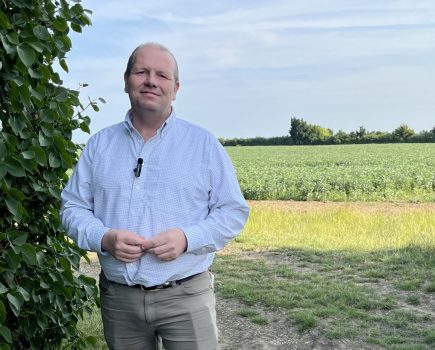Keeping up with the twists and turns in the yellow rust population has always been a bit of a mind bender.
I came away from this year’s UKCPVS stakeholder meeting in Cambridge thinking that there are serious challenges ahead for us all, both in the field and in understanding the disease. Since the Warrior race arrived from outside Europe, things are changing apace.
One of the challenges the scientists have is classifying the pathogen – the dominant red group in the UK now has many subgroups. This had led to a total shake-up of the naming system this year and, in all likelihood, there’ll be further changes to come.
Yellow rust races have always been named after the variety in which they first overcame resistance – most recently Solstice, Warrior and Kranich. Now that different groups and sub-groups of the Warrior types are present, the naming system is confusing.
As things currently stand, the predominant group of yellow rust present in the UK is now called Warrior 4, an amalgamation of Warrior 3 and 4 under the previous system. The same group is referred to as the red group by the John Innes Centre, who identify the genotypes in the field. In Denmark, the very same is termed Warrior Minus, which at least makes a bit of sense because one of the peculiarities of this particular pathotype is that it doesn’t cause disease in the variety Warrior.
The yellow rust that used to be termed Solstice has now been termed Warrior 3 (blue). It looks and behaves in the field like the old Solstice yellow rust but the experts at JIC have found that they’re genetically unrelated to the Solstice pathotype, yet are closely related to the Warrior pathotypes – yes, it’s confusing.
Fortunately, a group of experts from across Europe were due to meet the very next day to discuss how these groups should be named, so let’s hope they come up with something more intuitive and consistent. I’ve purposefully referred to each group by colour as well as name because it’s something that seems to work well with potato blight. Pink 6 and blue 13 are instantly recognisable to potato growers and it would be an easier system to follow when names change and new pathotypes emerge.
The thing is that, in the field you just have symptoms of yellow rust – that’s all you know about it and you have to deal with what you’re seeing. The data UKCPVS have collected on varietal adult and seedling resistance is a useful reference but can you really afford not to get yellow rust under control early by assuming adult resistance will kick in at some point and yellow rust will just die out? Bill Clark doesn’t think so and I think most agronomists would be inclined to agree. The problem is that it’s impossible to know precisely which pathotype you’re dealing with, or even more likely, mixture of pathotypes.
The French have shown that Warrior-type yellow rust is showing an ability to adapt to its environment. They’ve discovered isolates in the south that were adapted to high temperatures – meaning that at those higher temperatures the rust has a shorter latent period. This is unusual because ‘normal’ European isolates prefer lower temperatures. meaning they can continue developing later in the season.
So it’s possible that yellow rust may start to behave in a way that’s unexpected. The important thing is to stay vigilant in the field because we now have such a genetically diverse population of yellow rust that literally almost anything could happen.
Without getting bogged down in the science, what we really need to do is to look out for the unusual. If you get yellow rust infecting a variety that’s supposed to have good resistance, yellow rust continues to develop when adult resistance should have kicked in, or infections keep going late in the season, then alarm bells should start ringing and a sample should be packed off to NIAB, pronto.
By now you probably have a headache but in a nutshell, yellow rust is changing and will continue to do so. All you can practically do is monitor crops closely and apply fungicides as needed.






